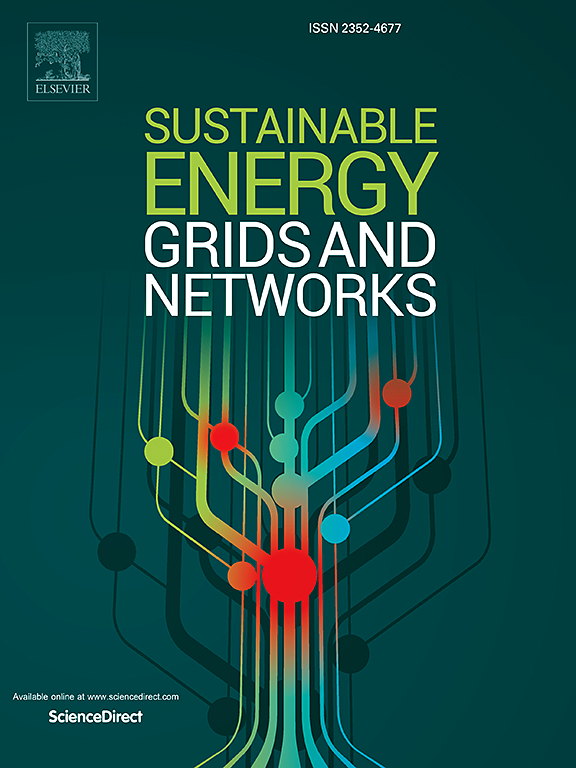Enhanced microgrid reliability through software-defined networking and extended horizon predictive control
IF 4.8
2区 工程技术
Q2 ENERGY & FUELS
引用次数: 0
Abstract
The dynamic nature of power systems combined with the need for low-latency and loss-tolerant communications, presents significant challenges to maintaining system reliability and resiliency. This paper proposes a novel integration of Finite Control Set Model-based Predictive Control with an extended prediction horizon and Software Defined Networked to address the resiliency problem and voltage/frequency deviations associated with traditional hierarchical microgrid. The communication framework integrates Software Defined Networked as a set of microservices distributed across local controllers and improved system reliability under communication constraints. The secondary control considers the variability of communication latency and packet loss to adjust the shared reference based on the spatial and temporal correlation. The microgrid is subjected to four test scenarios to analyze the impact of communications on distributed generation, plug-and-play capacity and load variations. The proposed control framework significantly improves system performance, achieving a 0.2–0.3 s recovery time, 0.05 s communication latency, and maintaining stability with up to 60% packet loss. Compared to hierarchical methods, it reduces recovery time by up to 90%, frequency deviation by up to 80%, and enhances power sharing and coordination between distributed generators. This method addresses the problem of low dynamic response of control strategies during disturbances, allowing the implementation of new, reliable and resilient hierarchical microgrids.

求助全文
约1分钟内获得全文
求助全文
来源期刊

Sustainable Energy Grids & Networks
Energy-Energy Engineering and Power Technology
CiteScore
7.90
自引率
13.00%
发文量
206
审稿时长
49 days
期刊介绍:
Sustainable Energy, Grids and Networks (SEGAN)is an international peer-reviewed publication for theoretical and applied research dealing with energy, information grids and power networks, including smart grids from super to micro grid scales. SEGAN welcomes papers describing fundamental advances in mathematical, statistical or computational methods with application to power and energy systems, as well as papers on applications, computation and modeling in the areas of electrical and energy systems with coupled information and communication technologies.
 求助内容:
求助内容: 应助结果提醒方式:
应助结果提醒方式:


